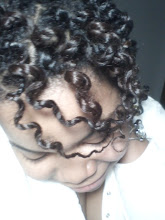It was a brisk, sunny morning on Wednesday, October 7, 2009.
COM 435 students rushed through the hustle and bustle of campus with a change in trajectory. Our usual destination of Beering Hall had been changed for today, and so we scurried to make it to the Mechanical Engineering Building, Room 156, by 11:30 A.M.
It was almost like an adventure.
Little did we know, the adventure had just begun.
Upon arrival, we were met with smiles, sign-in sheets and labels that proclaimed our roles for the geocaching activity.
Professor Lorraine Kisselburgh and one of her Teaching Assistants, Zeynep Tanes ,began to tell us more about the activity.
After we were briefed on what to look for in the caches, the Earthmate PN-20 GPS Receiver, and the objective of the game, we were told to exchange contact information.
A Central Investigative Unit (CIU) of 2 Lead Detectives and 2 Lead Reporters stood at the front of the class while members of 5 teams came and exchanged contact information with them.
A few team members brought the CIU phone numbers. As a member of the CIU, I felt pretty confident that through the use of our cellphone technologies like text messaging, picture and video capabilities and even instant messaging we would have more than enough technology to solve the mystery that awaited us within the mean streets of Purdue…
But then, there was a surprise!
One team member walked up and handed us a walkie-talkie. Talk about prepared! We were overly excited to have this often forgotten piece of technology at our disposal. We quickly tested out the walkie-talkies to ensure they could communicate, and then the teams were off.
We were ready to win.
The CIU sat anxiously and excitement filled the air of ME 156. The only sound we heard for a 3-minute eternity was the static crackling of a lone walkie-talkie that lay tenderly upon one of the desks.
Finally, the silence was broken.
“It’s taking them awhile,” I said, speaking of the teams that were out searching.
“It will get more exciting in about 5 minutes,” Professor Kisselburgh responded.
We waited a few minutes more, beginning to worry because we hadn’t heard a thing.
And then, it happened.
The high-pitched beep of a Motorola enV2 cellular device pierced the thick tension in the room, and what followed was a flurry of technologies at their finest.
A confused team said they needed a hint from the CIU, but we had nothing to offer.
Shortly after, Laura VanLiere, Lead Reporter, answered her phone for the first clue:
Although few would follow in 50 years, the first student graduated this many years ago…Stewart Center, mural dated ‘56
We were all stumped as she asked the team on the other end of the line to clarify where they located the clue. They said they had gotten it from a Stewart Center plaque near the large mural over the Humanities, Social Science and Education Library (HSSE).
Laura quickly asked them to send her a picture message that contained the mural.
They did.
Other phones rang, and what had started as complete silence was now nothing short of an organized technological symphony. It was brilliant, exciting, and enthralling to uncover each new piece of evidence.
We continued to communicate with the teams.
One said they had a clue at the Black Cultural Center that was a flyer for the documentary Black Purdue.
The next team's spokesperson offered the following familiar question:
What year launched Armstrong into space and brought him fame?
Hmmm...perhaps we are getting closer. We began to revise old evidence and eliminate what we did not need as the caches kept pouring in.
Lead Investigator Vana Chiu and I frantically traded places Googling the information that the teams were sending us, attempting to make sense of it. The clicking of the keys on the keyboard had become almost as loud and frantic as the interactions the CIU was having with the teams in the field.
We continued to assemble the pieces.
Soon, we were introduced to Levi Coffin and began to research him.
Then, Laura received a text message with only the following: July 20, 1969.
It was crunch time.
We put together all the pieces of this puzzle, added knowledge of what the documentary Black Purdue was all about, and...
...at 12:14 p.m...
...concluded that the solution to this mystery was that it was the Purdue Black Cultural Center’s 40th Anniversary!
We were astounded at how well our technologies worked in unison to provide us with the puzzle pieces we needed to put everything together, and after all of the teams returned, all we wanted to know was whether we were winning.
We found out that in only 25 minutes we had gone from a class of about 30 people who were looking for something completely vague to a class of 30 people who had allowed technology be our “mental prosthetic” (as Daniel Scott Poynter mentioned to us earlier this semester).
We found TRUTH in this activity, and believe it or not it wasn't the solution to the mystery.
'Truth,' in this instance, was that had we not utilized all of the communication technologies we had at our disposal, we would have never been able to solve this geocached riddle!
We learned that a picture can truly be worth “a thousand words,” whether it is via a paper photograph or a cellphone screen.
We also learned that sometimes simple is better. The technologies we incorporated allowed our teams to send us the bare facts of what they found, which was efficient for us. We put together the details.
All in all, we were ready to win, and collaboratively, using technology—we had a real shot at it.
Now let’s just hope we were successful.


No comments:
Post a Comment